When I volunteered at Arduino Day on Sat. March 28th, it was snowing so hard, the Charles River was barely visible from the top floor of the MIT Media Lab. But what an interesting place to learn more about the “Lego” of electronics. Make Magazine posted a slide show of photos I took that day.
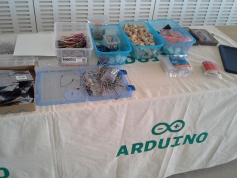
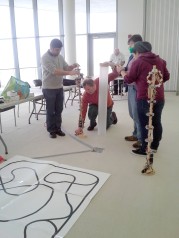
I first heard about Arduino from the collaborator on my piece The River of Connectivity which has 12 re-purposed computer fans across a 6 ft. long assemblage. Tyler built and programed an Arduino that turned the fans turned on then off in succession from left to the right. The fans, that look best when slowing down and starting up, recalled flowing water.
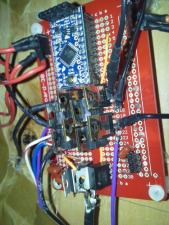
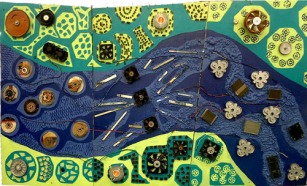
What is it? Arduino is an open-source electronics platform based on easy-to-use hardware and software. It’s intended for anyone making interactive projects. Therefore it is becoming popular with new media artists who create experiential environments and work with light and sound.
How Does it Work? As with all electronics, components are connected to a board. The Arduino board comes with some components already attached so you can just plug into your computer and use a free software to program, tell it what to do. There are many companies doing this.

The program spells out what steps to take in computer language. Using If statements allows the instructions to change based on options. Various roles of components include:
- Sensors, that react to light, sound, touch, speed, temperature, moisture;
- Switches, that turn things on and off and adjust speed;
- Clocks and counters, used to schedule frequency etc.
How does it relate to art? Some of my favorite artists made kinetic sculpture. Calder and Rikey made large metal shapes that moved, be they powered by the wind or human interaction. I once witnessed a couple of percussionists make wonderful rhythms on a large free-standing Calder swung around at The Neuberger Museum at SUNY Purchase, 1981. (This was it’s intended purpose.)

Alexander Calder, Red Mobile, 1956, Painted sheet metal and metal rods, a signature work – Montreal Museum of Fine Arts
Closer to Home: Some of my friends at the Artisan’s Asylum are experimenting with Arduino. Sage Kochavi’s piece Furry All, consists of two feet high letters, covered in soft fun fur. She programed the Arduino sensor to trigger LEDs embedded in the fur. As your hand nears, the lights glow brighter and when you stroke the fur, the letter begins to purr via the embedded motors which are triggered by the interaction.
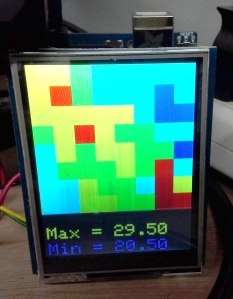
Another Asylum member Mark Brownawell, has set up a little monitor connected to a temperature sensor. As people come near, red blocks of color increase and blue decrease. Temperatures in between are represented in yellow and green.

It is inevitable that the current technology would be integrated into the art of the period. Products like Arduino make it possible for artists to push boundaries and use it in ways corporations and scientists would never would. How can you imagine using Arduino in a creative project?
Where Can I learn more?
You can take a class Introduction to Arduino
Arduino website: http://arduino.cc/en/Guide/HomePage
Store: http://store-usa.arduino.cc/
You can see a lot of interesting projects on
Instructables: http://www.instructables.com/howto/arduino/
https://data.sparkfun.com/ There are other companies doing this sort of thing.
https://processing.org/ — another artist friendly programming language.
Resources:
http://playground.arduino.cc/Projects/ArduinoUsers
Kaleidoscope: http://arduino-cool.blogspot.com/2014/06/kaleidoscope-with-arduino-and-rgb-led.html
Xmas Decorations: http://luckyresistor.me/xmas-decoration/
The Art Connection: http://www.theartconnection.org/

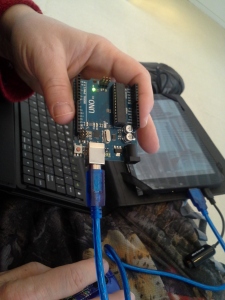
One Reply to “”